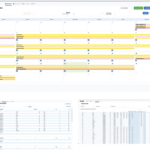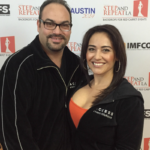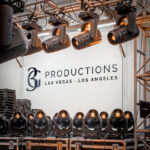
Ayrton is the relative new company on the block that is taking the industry by storm. Ayrton has gone from being a niche special effects product developer to an industry standard in only six short years. Most people recognize Ayrton by the iconic, award-winning MagicPanel 602 (LDI 2013 Best Debuting Product of the Year) and the subsequent MagicBlade-R and MagicDot-R fixtures.
These three fixtures put Ayrton on the world stage as a creative leader in the special effects and projector classification. Equipped with continuous unlimited rotation in pan and tilt, these fabulous fixtures could not only display numbers, letters, graphic effects or images, but also act as a dazzling projector. They were square pegs in an industry dominated by round holes. The industry had a hard time figuring out where the square peg went until Leroy Bennett’s lighting design for the 2013 Nine Inch Nails Tension tour utilized one of the largest installations of Ayrton MagicPanel 602 fixtures to date.
The MagicPanel pods formed a major component of the NIN show as both illuminators and as staging elements. They were alternatively positioned directly above the performers, then flown out to define large architectural spaces. They also served as audience blinders and ultimately interfaced with the three semi-transparent video curtains. Coordinated video content was then pixel mapped across the collective 4,536 emitters of 126 MagicPanel units. It was like nothing that anyone had ever seen before. Despite their ability to rotate continuously, Bennett used that feature sparingly in key moments of the performance. This combination of creativity and innovation took Ayrton out of the shadows and onto the mainstage.
Phase 1 (2003 to 2009)
Unbeknownst to the rest of the industry, Paris-based Ayrton had been around long before the MagicPanel. Yvan Péard created the Ayrton brand in 2001 and, since its inception, has pushed creative and technical limits at every opportunity. He chose the name and color yellow as a tribute to the outstanding Brazilian racing driver, Ayrton Senna, whose attention to detail and desire to win is an everlasting inspiration to Péard.
Péard left an early collaboration/partnership with Josef Valchar of Robe to pursue his dreams of designing and manufacturing his own creations in their entirety. Péard introduced the Ayrton brand at the 2003 Prolight + Sound trade fair in Frankfurt, Germany, with the EyeColor, the first professional LED-based moving head fixture. Equipped with 192 20 mW LEDs, EyeColor could generate a vast palette of rich and saturated colors without resorting to a complex mechanical system. Unfortunately, in a dark room, the fixture could not hit the floor with any light from 10 feet. The EyeColor proved a medium success, barely paving the way for a new type of fixture in the entertainment industry.
Péard leveraged his meager successes from the EyeColor to launch the EasyColor line at the 2004 London PLASA Show. The ModuLED 318, a static modular luminaire with three independent arrays, each equipped with 18 Luxeon-powered LEDs, proved that Péard was dedicated to the LED movement. Several EasyColor units could be assembled together to create different shapes, presenting the lighting designer with a variety of options. This luminaire continued to evolve over the years by incorporating the latest technology and inspired the creation of the 2014 IntelliPix product line.
However, it was not until Valère Huart-Gyors came onboard and utilized his salesmanship skills to advance the brand that Ayrton gained any notable traction in the industry. Huart-Gyors took one of Péard’s newest creations, the WildSun 500C, in his luggage to introduce it to leading lighting designer, Jeff Ravitz.
Ravitz was looking for a suitable touring replacement for moving wash lights and saw the genius radiating from the WildSun. WildSun 500C was provided with a four-color LED source that produced a tungsten effect sought after by many lighting designers. WildSun 500C was a wash light in the true sense and its optical zoom system was selected for its ability to emulate a Fresnel-type beam. With 37 RGBW 13-watt LED emitters, the WildSun 500C was fitted with an active cooling system using heat transfer fluid with phase change, allowing for heavy use under extreme conditions. The fixture’s independently controllable central LED and rings could generate a multitude of graphic effects. Ravitz judiciously chose WildSun 500C for Bruce Springsteen and the E Street Band on their 18-month Wrecking Ball world tour. This proved to be the springboard that led to a second phase for Ayrton.
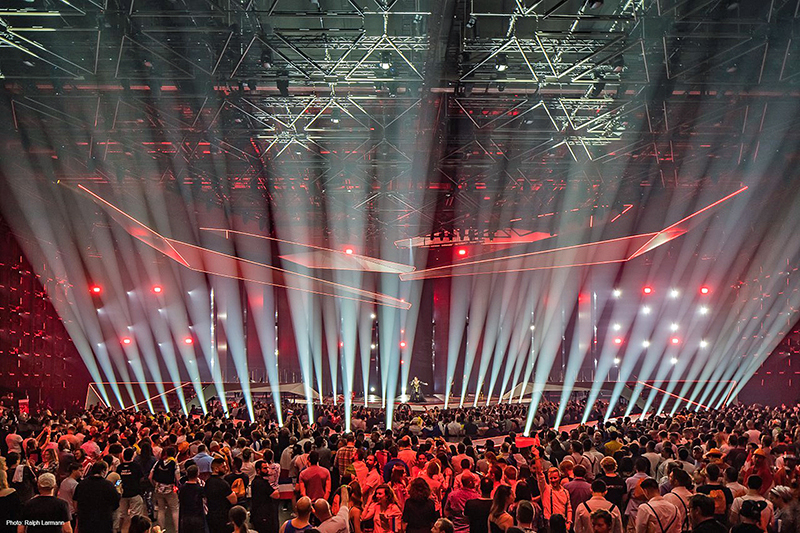
Phase 2 (2010 to 2016)
With the admiration of an industry-leading designer like Ravitz and a few dollars in the bank, Péard was able to take the risks that he knew he had to take. This gave him the time and the confidence to release his imagination. Industry-changing fixtures such as the RollaPix, MagicPanel 602, and new ‘Radical’ range fixtures like MagicBlade R, the award-winning MagicDot R (Live Design Product of the Year Award 2016), and the MagicRing R9 came from this phase. These fixtures — unimaginable before the LED revolution — started scorching the stages and burning up DMX channels like no fixtures before them. (The MagicRing R9 is possibly the first moving head fixture to take up 260 channels of DMX!) The infinite tilt, pixel mapping ability and video capability of these fixtures contributed to the LED revolution and quickly gained worldwide acclaim.
This meteoric fame quickly generated lookalike fixtures in the industry that shared the capabilities but lacked the innovation of the original. Soon the market was flooded with cheaper, less robust versions of the most popular Ayrton fixtures. Péard was forced to push the envelope further and further at a dizzying pace. His passion for extremes culminated in the DreamPanel Twin, a hybrid luminaire with the MagicPanel on one side and the DreamPanel Shift on the other.
Capable of continuous rotation on the pan and tilt axes, the DreamPanel Twin could alternate between displaying video content and 3D volumetric lighting effects. The 6 mm pitch of the video side offered the perfect balance of definition required to display video media on stage with overall system brightness. The MagicPanel side had improved resolution with its eight-by-eight matrix featuring patented 45 mm diameter collimators that could obtain a full 6° angle and center-beam luminous intensity of over 73 candela per lumen, a record achievement. Lighting and video were integrated into one fixture as Péard found a way to combine his passions into a single fixture. The industry was excited to see the masterpiece, but the fixture was difficult to integrate and tour, and demand did not rival the successes of the previous fixtures.
The innovations and refinements continued to come with the arrival of the likes of the MagicDot-R, the first professional moving head LED luminaire with a single optical collimator; and MagicPanel-FX and MagicBlade-FX, both of which sported a revolutionary optical zoom that expanded the creative possibilities of 3D volumetric effects.
MagicBurst, the first high-powered graphic LED strobe with the now-famous Ayrton continuous rotation on pan and tilt, was also an award-winner in this era, receiving the coveted PIPA Award 2017 at Prolight+Sound, in Frankfurt. “The balance of our system was based on our ability to innovate and offer special optics that did not exist on the market,” says Péard. “When we entered the market, we were about a year ahead of our competitors. It was magic, and it allowed Ayrton to excite and be recognized all over the world.”
At this time, Ayrton was comprised of fewer than 10 people, and this magic phase of effects lighting became known as “The Valère Years,” says Péard, “in memory of Valère Huart-Gyors, who carried our house at arm’s length for more than six years and who unfortunately tragically left us one month after the acquisition of Ayrton by Golden Sea.”
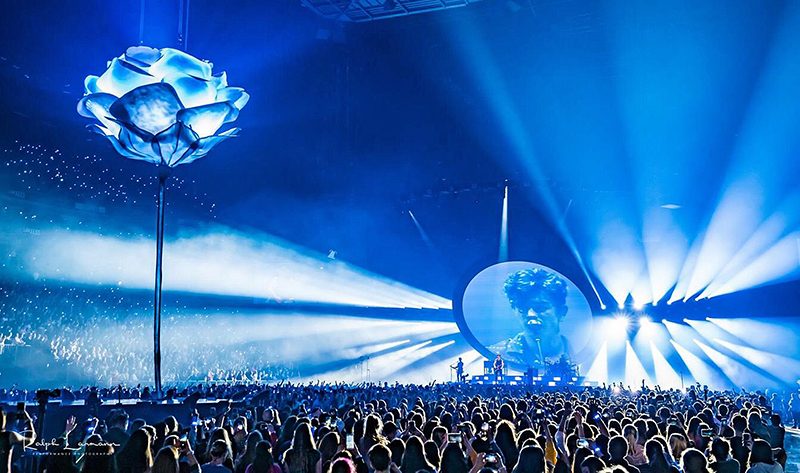
Phase 3 (2017 to Today)
Péard remained determined to let the industry know that he could not only perfect the special effects market, but also the more conventional spot market. “Detail is my permanent obsession,” he says. “I think it’s pretty easy to get to 95 percent of a goal. The most difficult part to reach is the last five percent.” But it is his insistence on chasing that extra five percent that pays dividends with each Ayrton product.
For many years, lighting manufacturer Golden Sea believed in Péard’s vision and came to the table in a big way to back him. With Golden Sea on his team and a fresh set of players, Péard was able to devote the necessary resources to designing, developing and producing the Merak and the Ghibli. These fixtures proved that Ayrton could compete with other leading manufacturers in the mainstream spot/profile market.
The major twist was that Péard still refused to compromise on LED sources. He knew that he could provide more lumens while consuming less wattage using LEDs than competing discharge lamp fixtures. Péard paved the way for LED fixtures to replace arc lamps one at a time. Péard and his expanded team broke the seemingly impossible barrier of 10 lumens per watt, when it was originally thought that a 1,000-watt LED source could never exceed 10,000 lumens. Today, Ayrton is presenting fixtures that require a mere 1,000 watts to generate 50,000 lumens.
These latest innovations and products of the “wind series,” including Khamsin, Bora, Diablo and Mistral, have quickly become established favorites, blowing lighting designers away with their combination of features, output and rugged reliability in compact and lightweight units — features which have also made them favorites with the touring techs who have to wrangle lighting fixtures on a daily basis.
“We don’t have an ultimate customer, as we need to cater to all the components of this industry,” says Péard. “Obviously, the rental company is very important to us. They are the ones who buy the products and who will promote and maintain them for several years. The lighting designer is the one who advocates our products and who will put them to such creative use in a show. He has a very important power. The artist may not always understand what is going on with the technique, but it’s the artist who puts on the show, and it’s he or she who makes the audience dream. Finally, the audience come to see the shows and buy tickets, and without them, we would no longer exist.”
Ayrton has a clear industry vision for the next five years. Its first objective is to complete a consistent product range, adding sleek design and rigorously respecting the Ayrton brand DNA, in which each luminaire belongs to a category that, between them, cover all sizes of venue and types of applications. To date, Ghibli has been joined in the spot/profile category by Mistral and Diablo (recently awarded the 2020 ESTA Members Choice Award in the Equipment Category); the mighty Khamsin, with its 40,000 lumen output; and the graphic-adelic Huracán, with its 50,000 lumen output, unique graphic capabilities and advanced color mixing system.
Huracán’s many revolutionary features include its unique dual saturation CMY, CTO, CTP, CTB subtractive system that gives the user complete control over the color palette. Designers no longer have to use different fixtures to achieve perfect pastels or optimum saturated colors. Bora is Khamsin’s wash “partner,” and the two units are quickly proving a go-to combination for large touring concerts. Karif, Shamal and Eurus are the latest fixtures to arrive, having been designed by Péard specifically for long-throw applications. Meanwhile, Perseo, Ayrton’s first IP65 rated fixture, is literally taking the industry by storm, sitting out in all weathers to perform against the odds in our climate-challenged times, just followed by Domino, Ayrton’s 1,000-watt IP65 fixture that, even before launching in March 2020, gained popularity and substantial orders.
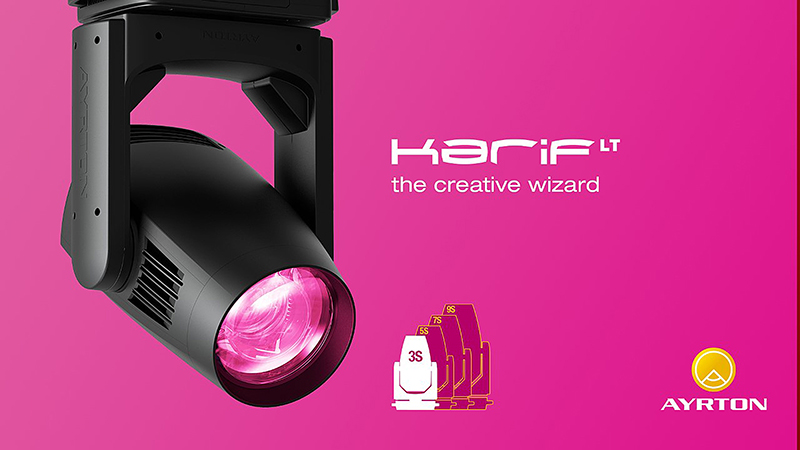
Environmental Awareness
Being the industry leader in innovation and technology is not enough for Ayrton. CEO Chris Ferrante is looking to ensure that Ayrton is also leading the industry in environmentally sustainable practices.
While Ayrton’s products have been designed to reduce any unnecessary internal heat and UV emissions, Ferrante has taken steps to reduce single-use plastics in all of Ayrton’s packaging and ensure recyclability of as many products as possible. For instance, up until the end of 2019, Ayrton still shipped with single use plastic (a bag for the fixture, and accessories), an impact-resistant foam pad to protect the base of the fixture and plastic corners to protect the edges — all single-use, hard-to-recycle items.
Starting in 2020, all new products will no longer ship with single-use plastic and foam packaging items. Ayrton will have removed all plastic backs and created a corrugated paper impact resistant pad to protect the base, which also holds all the accessory items. This is an example of the attention to detail that Ayrton takes to streamline every facet of the industry.
The Next Phase
So, where Ayrton will go next? The company recently brought on several new employees, including Chris Lose, who writes PLSN’s “LD-at-Large” column, as designer relations manager. He has been tasked to reach out to leading designers to discover what they need and how Ayrton can improve upon their already continuing successes. When asked what was next, he suggested that most designers were asking for more IP65-rated fixtures. Designers and rental houses alike are clamoring for fixtures that work in all situations. Rain, shine, or even under downpour, they want their fixtures to keep on functioning no matter what the situation.
The IP65-rated Perseo has been that fixture for lighting designer Bob Barnhart. He specified 80 Perseo fixtures on the well-received Super Bowl LIV halftime show spectacle. After several rainy nights, the Ayrton fixtures powered up and powered forward, with zero fixture failures. Not a single fixture was swapped, according to several lighting technicians on the field. “A world of hassle-free lighting is where we are headed next,” said Lose, who notes that Ayrton’s commitment to product innovation will continue. While unable to divulge many details, Lose mentioned that Péard had been experimenting with laser sources. Needless to say, Lose is very excited and optimistic about the company’s future.
For more information on Ayrton, go to www.ayrton.eu.
Editor’s Note: After this article was published, PLSN received additional information on this story from LD Jeff Ravitz, which follows below:
“I really enjoyed the article, Company 411: The Many Phases of Ayrton, by Thomas Friedman (PLSN, April 2020). The article was an enjoyable read about a company whose excellent products are, not surprisingly, being embraced by the industry as well designed and high quality fixtures.
“I wanted to add a little info and clarification to the timeline that Mr, Friedman described about my discovery of Ayrton and subsequent use of the Wildsun 500C for Bruce Springsteen and the E Street Band’s 2012 Wrecking Ball tour.
“Morpheus Lights, the tour’s long-term lighting system vendor, had become Ayrton’s North American distributor sometime in 2011, and brought the company’s products to my attention. Paul Weller of Morpheus introduced me to Valère and Yvan. Valère, Paul and I discussed the viability of using the Wildsun 500C, in particular, for the upcoming tour. The timing was right since the design phase was just starting to ramp up. After a day-long session of testing the light in the Morpheus shop, the decision was made to use 52 Wildsun 500Cs for the tour — and what a remarkable new look it gave the show. We chose the 500C for its warmer white engine, which more closely replicated the tungsten washes we had historically used as the foundation of the lighting design. That tone always appealed to Bruce (and me) as a color base that lent itself well to the drama, energy and emotions of a Bruce/E Street Band show.”
-Jeff Ravitz
